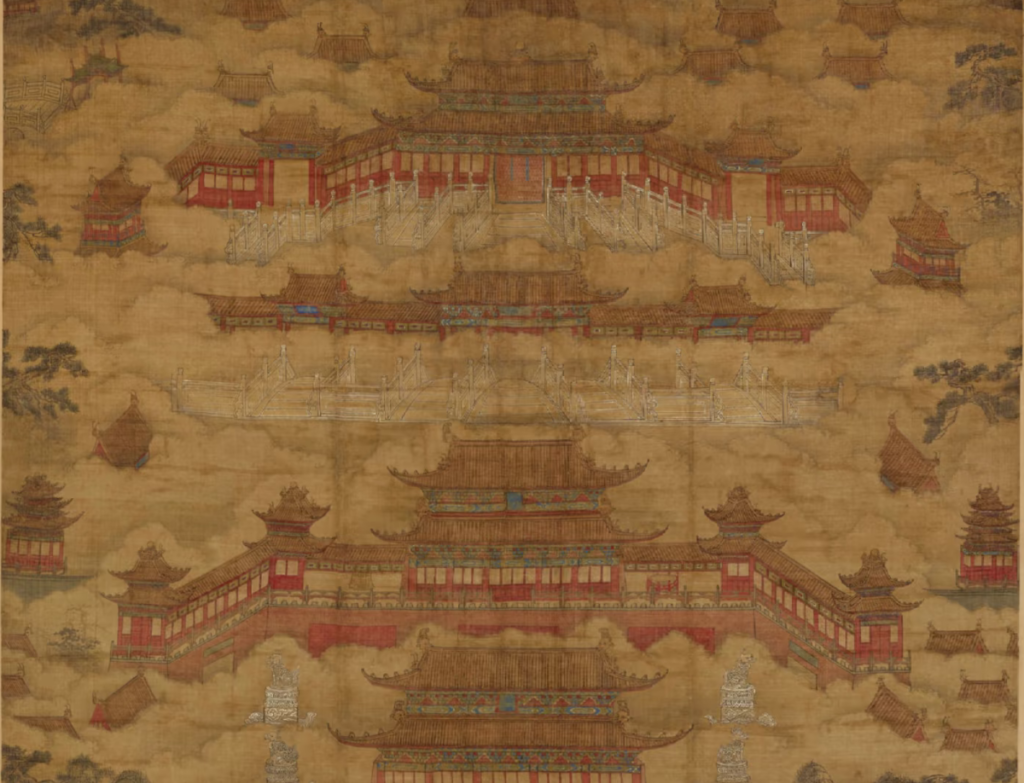The Ming Dynasty (1368–1644) was a vibrant and transformative era in Chinese history. Known for its powerful central government, economic prosperity, technological innovation, cultural brilliance, and global exploration, the Ming left behind a rich legacy that shaped not only China but also influenced the wider world. Here’s a detailed look at its key achievements.
How Did the Ming Dynasty Strengthen Its Political System?
The Ming Dynasty refined and centralized imperial rule in remarkable ways:
- A Stronger Monarchy: The Ming abolished the position of chancellor, replacing it with a cabinet-like system led by Grand Secretaries who assisted the emperor directly. This move reduced the risk of power struggles and strengthened the emperor’s personal control.
- Surveillance Institutions: Agencies like the Jinyiwei (Embroidered Uniform Guard), Eastern Depot, and Western Depot acted as intelligence networks, enhancing imperial oversight over officials and civilians.
- Efficient Local Governance: The empire was divided into provinces, prefectures, and counties. Central government appointees such as governors-general (zongdu) and regional inspectors (xunfu) supervised local affairs, creating an effective bureaucratic system that improved stability.
How Did the Ming Expand and Secure Its Territory?
The Ming Dynasty successfully reclaimed and consolidated China’s borders:
- Territorial Integration: Lands lost during the Yuan Dynasty, such as Yunnan and Liaodong, were reabsorbed. The Ming also set up administrative units like the Nurgan Commandery (Northeast), U-Tsang Commandery (Tibet), and Dogan Commandery (Qinghai), extending Chinese governance across frontier regions.
- Defensive Construction: The Ming built the Great Wall on a massive scale—stretching from the Yalu River in the east to Jiayu Pass in the west. Most of today’s surviving sections were built during this time.
- Military Campaigns: Emperors like Yongle led multiple expeditions against Mongol forces, stabilizing the northern frontier and asserting dominance over Inner Asia.
How Did the Ming Dynasty Promote Economic Growth?
Under Ming rule, China saw tremendous economic vitality:
- Agricultural Innovation: New crops such as maize, sweet potatoes, and potatoes—introduced from the Americas—boosted food production and helped the population grow beyond 100 million. Irrigation tools like waterwheels improved farm efficiency.
- Thriving Handicrafts: Specialized industries flourished:
- Jingdezhen porcelain, especially blue-and-white ware, became a global symbol of Chinese artistry.
- Silk weaving in Suzhou and Hangzhou grew into professional, urban-scale operations.
- Cotton textiles in Songjiang supported both domestic and export markets.
- Rising Commercial Cities: Centers like Beijing, Nanjing, and Suzhou thrived. Trade networks emerged, and silver became the standard currency. Merchant groups such as the Shanxi bankers and Huizhou merchants laid the foundation for early capitalist practices.
What Were the Ming Dynasty’s Technological and Engineering Contributions?
The Ming era witnessed groundbreaking progress in science and engineering:
- Landmark Scientific Works:
- Compendium of Materia Medica by Li Shizhen documented nearly 1,900 medical substances, serving as a major reference in East Asian medicine.
- The Exploitation of the Works of Nature by Song Yingxing offered detailed insights into mining, smelting, papermaking, and textiles—earning it the title “the Chinese encyclopedia of technology.”
- Complete Treatise on Agricultural Administration by Xu Guangqi combined Chinese agronomy with Western hydraulic techniques, such as waterwheel-driven irrigation.
- Beijing’s Urban Planning: The city was rebuilt with strict geometry, dividing it into the Forbidden City, imperial city, inner city, and outer city. The Forbidden City remains the largest and best-preserved wooden palace complex in the world.
- Maritime Leadership: Admiral Zheng He’s seven voyages between 1405 and 1433 were unmatched in scale:
- His treasure fleet included ships over 130 meters long and carried up to 27,000 crew members.
- He reached regions as far as the Red Sea and East Africa, using magnetic compasses and celestial navigation.
- These expeditions enhanced trade, diplomacy, and cultural exchange, preceding Europe’s Age of Discovery by decades.
How Did the Ming Dynasty Contribute to Literature and Philosophy?
The Ming Dynasty experienced a cultural golden age, especially in literature and performing arts:
- Classical Novels Flourished:
- Romance of the Three Kingdoms, Journey to the West, and Water Margin were written during this time, cementing their status as Chinese literary classics.
- Short story collections like San Yan and Er Pai portrayed urban life and middle-class values with wit and detail.
- Theater and Music:
- Kunqu Opera, elegant and poetic, dominated elite circles. The playwright Tang Xianzu wrote The Peony Pavilion, blending lyrical beauty with romantic imagination.
- Philosophical Vibrancy:
- Thinker Wang Yangming developed Neo-Confucian idealism, emphasizing moral intuition and unity of knowledge and action.
- Late Ming philosophers like Li Zhi challenged orthodoxy and promoted individual freedom, reflecting the rise of diverse intellectual currents.
How Did the Ming Dynasty Interact with the World?
The Ming Dynasty was not isolated—it played an active role in early globalization:
- Zheng He’s Voyages: These diplomatic missions spread Chinese goods, technologies, and culture while also bringing back rare animals (like giraffes) and exotic items, expanding China’s global awareness.
- Western Missionaries Arrived:
- Jesuits such as Matteo Ricci introduced Western science, astronomy, and mathematics to China.
- At the same time, they translated Confucian texts into Latin, helping introduce Chinese thought to Europe—part of a larger trend of East-to-West knowledge exchange.
Conclusion: Why Does the Ming Dynasty Still Matter Today?
The Ming Dynasty was more than just a powerful empire—it was a period of great transition. Its reforms in governance, its engineering feats like the Great Wall and Forbidden City, its export of culture through porcelain and exploration, and its cultural masterpieces all stand as milestones in Chinese and world history. The Ming laid the groundwork for China’s early modern identity, marking a time of strong government, global curiosity, and flourishing creativity. Its legacy continues to shape how we understand Chinese civilization today.
